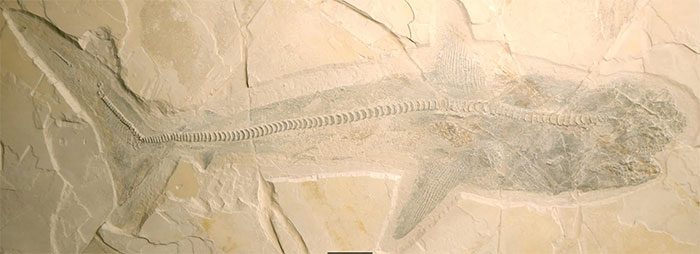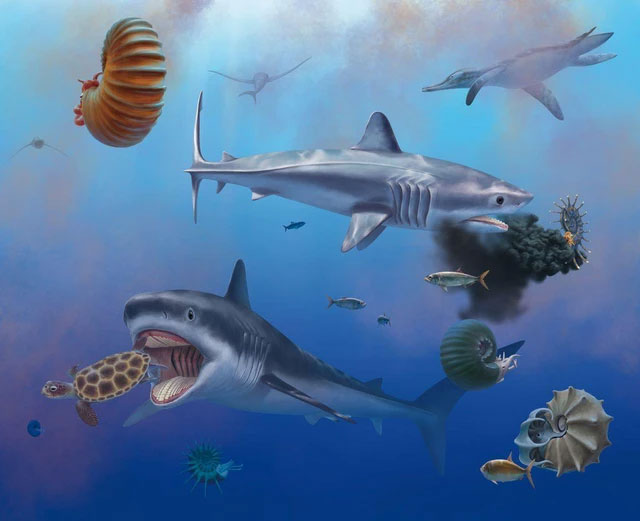Today’s great white sharks are still much less dangerous than their newly unearthed ancestral sea monster .
An almost completely intact fossil of a 76-million-year-old sea monster discovered in a limestone quarry in Nuevo León – Northeast Mexico has provided a chilling glimpse into what once lived with dinosaurs on a large scale. “monster earth” Cretaceous period.
It was identified as an extinct species of shark belonging to the genus Ptychodus, but is much scarier than all shark species that exist today.
 The Cretaceous sea monster was a giant shark – (Photo: Proceedings of the Royal Society B: Biological Sciences).
The Cretaceous sea monster was a giant shark – (Photo: Proceedings of the Royal Society B: Biological Sciences).
Lead author Romain Vullo, a researcher at Géosciences Rennes (France), told Live Science via e-mail: “The discovery of complete Ptychodus specimens is really exciting because it solves one of the problems. the most outstanding mystery of vertebrate paleontology”.
Sharks of the genus Ptychodus were first discovered in the mid-eighteenth century. Descriptions of the genus are mainly based on its teeth – which can be nearly 55 cm long and 45 cm wide found in many Cretaceous marine deposits.
A sea monster unearthed in Mexico provides its full “portrait” for the first time.
It shows a body up to 10 meters long, preserved with an appearance as if swimming in ancient stone.
 Graphic image depicting an extinct sea monster in Mexico – (Photo: Proceedings of the Royal Society B: Biological Sciences).
Graphic image depicting an extinct sea monster in Mexico – (Photo: Proceedings of the Royal Society B: Biological Sciences).
Ptychodus sharks are closely related to today’s great white sharks, but this fossil shows that this ancestor was a much more fearsome killer than its successor.
Most notable for this species is still the multi-layered teeth that evolved to adapt to animals with hard shells.
Their favorite food is sea turtles and other large extinct hard-shelled animals.
Ptychodus occupied a special ecological niche in late Cretaceous seas because it was the only shark adapted to eating hard-shelled prey such as turtles.
This may explain why it became extinct about 10 million years before the extinction event caused by the Chicxulub meteorite that ended the Cretaceous period.
According to the authors, at the end of the Cretaceous period, this super shark may have had to compete for its favorite hard-shelled prey with mosasaurs, a group of giant marine reptiles that reached their golden age at the time, with many species larger than Ptychodus.





